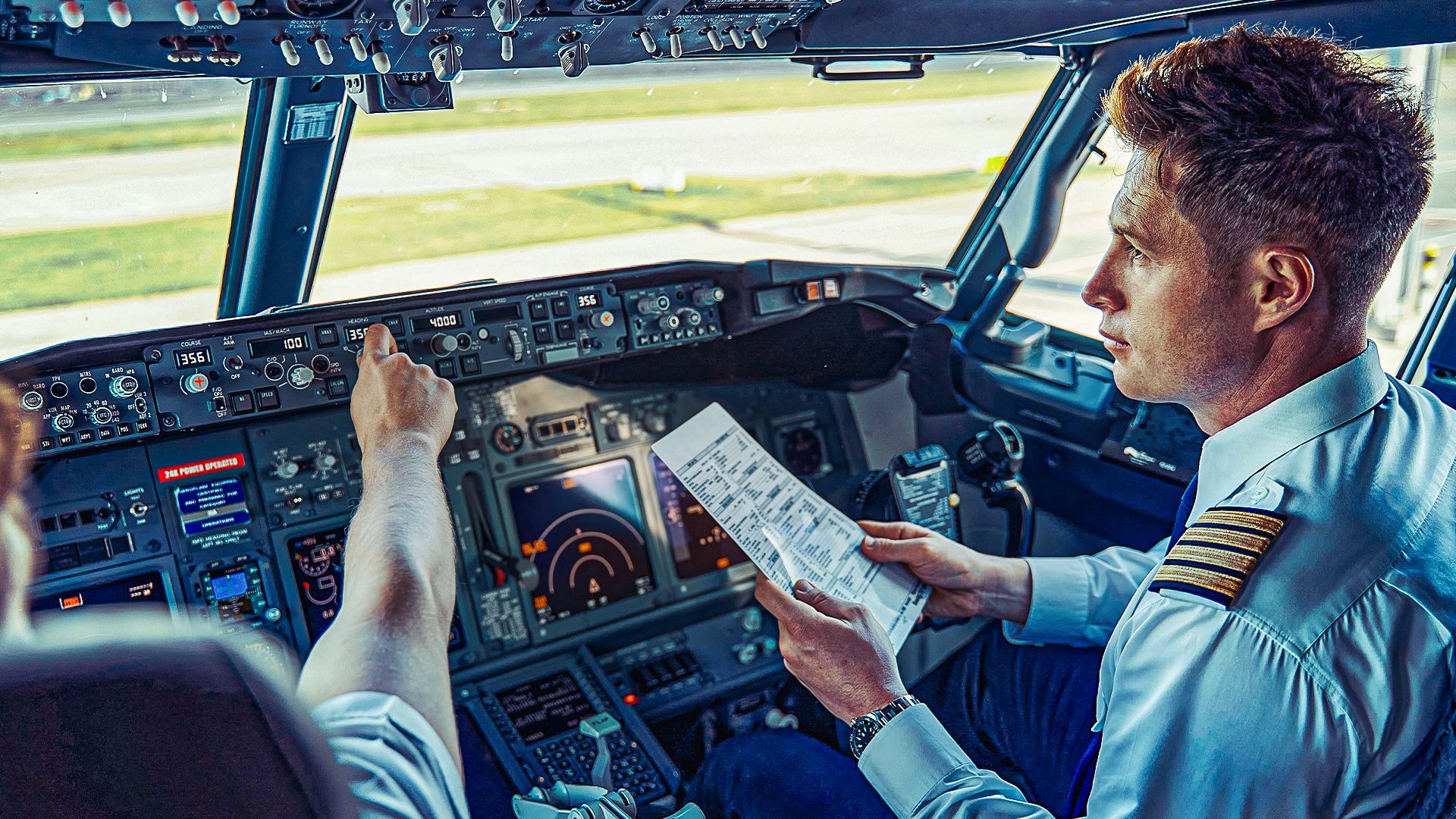World
First Officers in US Airlines See Salaries Soar in 2025

The landscape for commercial airline pilots in the United States has seen significant changes in 2025, with salaries for first officers reaching new heights. Major airlines such as American Airlines, Delta Air Lines, and United Airlines have adjusted their pay structures in response to an evolving industry and a growing demand for qualified pilots. According to the US Bureau of Labor Statistics, the median annual salary for a commercial pilot was approximately $198,100 in May 2024, four times higher than the national median wage of $49,500.
Despite the allure of a pilot’s lifestyle, salaries can vary significantly based on factors such as experience, airline, and aircraft type. The pay gap between first officers and captains illustrates the increasing responsibilities that come with experience in the cockpit. First officers, often referred to as co-pilots, typically earn between $55,000 and $160,000 depending on their airline and experience level, while captains can earn upwards of $200,000 at major airlines.
Understanding Pilot Roles and Responsibilities
The distinction between first officers and captains lies primarily in experience and decision-making authority. Captains, designated as “the pilot in command,” hold the ultimate responsibility for the safety and operation of the flight. They have the legal authority to make critical decisions, even if they conflict with the airline’s initial assessments. For instance, a recent incident involved a Delta Air Lines captain who refused to fly an aircraft cleared by maintenance, prioritizing safety based on his experience, despite maintenance inspectors finding no issues.
The salary structure reflects this hierarchy of responsibility. For regional airlines, first officers earn between $55,000 and $80,000, while those at major airlines receive salaries ranging from $120,000 to $160,000. Captains at regional airlines earn between $85,000 and $120,000, whereas captains at larger airlines can command salaries starting at $200,000.
Compensation Beyond Base Salary
The compensation package for pilots often extends beyond base salary, making the overall earnings more complex. Pilots are typically paid on an hourly basis, meaning they earn money only while flying. Hourly wages can vary widely based on factors like flight hours and the type of aircraft operated. Most airlines guarantee a minimum number of hours per month, usually between 70 and 85, but with ongoing pilot shortages, many are offering overtime pay, sometimes exceeding 300% of the base hourly rate.
Additionally, pilots receive a per diem allowance to cover expenses while away from their home base, as well as benefits such as sign-on bonuses, health insurance, and retirement plans. These incentives are becoming increasingly crucial for airlines aiming to attract and retain talent in a competitive market.
The type of aircraft flown also significantly impacts earnings. For instance, a first officer flying a 737 with three years of experience earned approximately $161 per hour in 2022, while those flying a 777 made around $198 per hour.
Global Perspectives on Pilot Salaries
In a global context, pilot salaries in the United States are among the highest in the world, influenced by factors such as regional economic conditions and union strength. While pilots in Europe generally earn less than their American counterparts, pilots in rapidly growing markets like China can earn between $300,000 and $500,000 annually. The Middle East also offers competitive salaries, ranging from $100,000 to $200,000, often with tax-free benefits.
The Future of a Pilot’s Career in the US
As the aviation industry continues to evolve, aspiring pilots may wonder if pursuing a career in this field remains worthwhile. Becoming a pilot involves more than just a job; it often represents a lifelong dream. The work schedule can be demanding, with variable hours and multi-day trips that may lead to fatigue. However, seniority typically allows pilots more control over their schedules and flight assignments.
With the current shortage of pilots, first officers can advance to captain positions in as little as two years, an opportunity enhanced by attractive signing bonuses offered by regional airlines. According to the US Bureau of Labor Statistics, employment opportunities for commercial pilots are expected to grow by 5% between 2024 and 2034, driven by retirements and an increase in global travel demand.
This growing demand ensures that pilots will likely see continued improvements in salary and benefits, making the profession an appealing choice for many.
-

 Science1 month ago
Science1 month agoIROS 2025 to Showcase Cutting-Edge Robotics Innovations in China
-

 Science2 weeks ago
Science2 weeks agoUniversity of Hawaiʻi at Mānoa Joins $25.6M AI Initiative for Disaster Monitoring
-

 Lifestyle1 month ago
Lifestyle1 month agoStone Island’s Logo Worn by Extremists Sparks Brand Dilemma
-

 Health1 month ago
Health1 month agoStartup Liberate Bio Secures $31 Million for Next-Gen Therapies
-

 World1 month ago
World1 month agoBravo Company Veterans Honored with Bronze Medals After 56 Years
-

 Lifestyle1 month ago
Lifestyle1 month agoMary Morgan Jackson Crowned Little Miss National Peanut Festival 2025
-

 Politics1 month ago
Politics1 month agoJudge Considers Dismissal of Chelsea Housing Case Citing AI Flaws
-

 Health1 month ago
Health1 month agoTop Hyaluronic Acid Serums for Radiant Skin in 2025
-

 Science1 month ago
Science1 month agoArizona State University Transforms Programming Education Approach
-

 Sports1 month ago
Sports1 month agoYamamoto’s Mastery Leads Dodgers to 5-1 Victory in NLCS Game 2
-

 Top Stories1 month ago
Top Stories1 month agoIndonesia Suspends 27,000 Bank Accounts in Online Gambling Crackdown
-

 Sports1 month ago
Sports1 month agoMel Kiper Jr. Reveals Top 25 Prospects for 2026 NFL Draft








